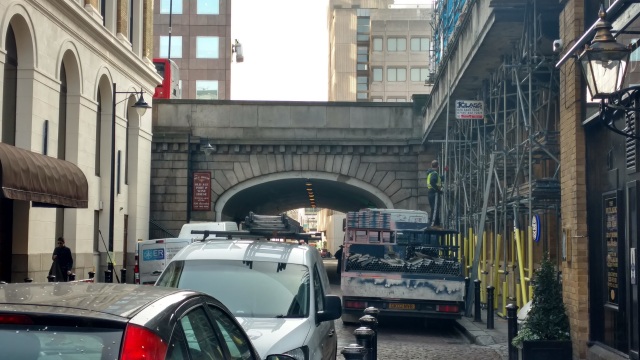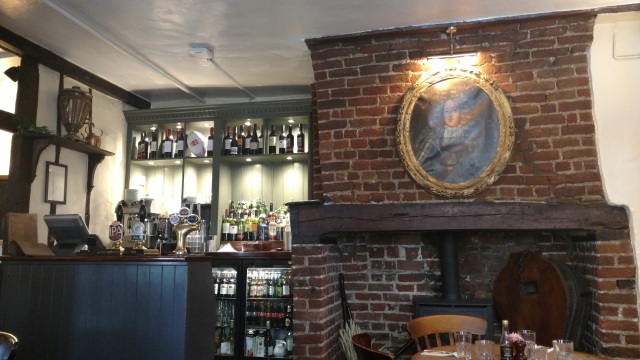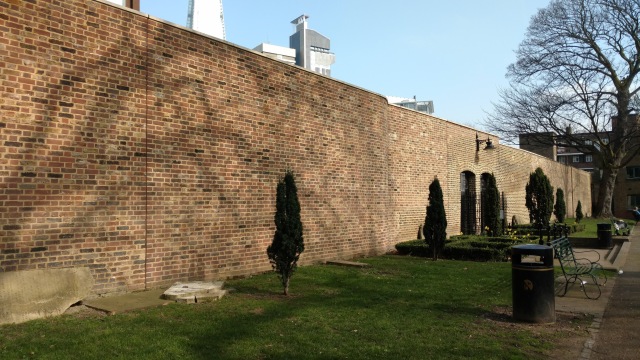Now that we’re at the end of our trip here in London, I’m beyond glad I made the choice to take this course. Of course, as a Victorianist, the appeal was obvious – but the outcome was more than I could have imagined. Though I’ve been to London before and this helped me understand how the city works now, I was constantly in awe at how many small things were such a part of my literary background and reading material. Seriously, would I have looked at that staircase that Kim said was from Oliver Twist and been like “Hey, that’s that staircase from Oliver Twist!”? (No, no I wouldn’t have.)

Kim’s Victorian London tour was easily my favorite of the week. Kim was knowledgable, sweet, and just incredible – she provided a perfect blend between historical and modern facts of the area. I loved that she mentioned nearly everything we read for the course (neglecting Amy Levy, but it was indeed hard to connect her to the tour) and it really got my mind working about our readings and how they relate to the city of London and to each other. I could write a paper on each of these books and how we experienced them during our trip, but I’ll briefly cover a couple here.
Henry Mayhew’s London Labour and the London Poor
I absolutely loved that Kim mentioned Mayhew during the tour – if I remember correctly, she’s the only tour guide to directly mention him. I thought it was perfect to mention – I like to think of the modern “Humans of New York” (and, in extension, “Humans of London”) as the modern Mayhew-style interview.
Mayhew’s work is one of my favorites. In my undergraduate courses, we covered Mayhew as well, in particular I remember the story “The Watercress Girl,” a story where a young girl sells watercresses on the street and doesn’t even know what playing is, or that she might be allowed to. The Mayhew selections we read for this course, in particular “Those Who Live in Low Lodging Houses,” and the poor watercress girl were in the forefront of my mind as we walked around public housing. First, we saw buildings that would have housed multiple families per room with only one water pump and public bathrooms and, if possible but rare, showers. It’s easy to see how a young girl might not realize she can play, if she is cramped like she would have been in these public houses. If you are in the good graces of the landlord or otherwise property owner, you might be able to have a room of your own (like the ones in the top left picture above), but those were few and far between, especially when you compare to the thousands of people living in the area. Even then, the rules and restrictions might be difficult – as Kim was saying, you might have a set curfew and a set amount of times you had to attend church. If you messed up, you were kicked out, and likely in a worse position than you were in before you got into the house. Sometimes a pioneer like Octavia Hill came along and created housing specifically for women, and they would get a little house to themselves (as shown in the bottom right picture above) – but again, the ratio of houses to people who need them is painfully large. If you got one of these rooms or houses to yourselves, you are either rich, incredibly lucky, or have wonderful connections.
And, occasionally, you lived in a prison with your family, like Charles Dickens did during his childhood.
Charles Dickens’ Oliver Twist (and his novels / life overall)
Perhaps the most heartbreaking and simultaneously breathtaking part of the tour was when we saw the wall for the debtors prison that Dickens’ father was in. I loved that we went here – it really put that part of Dickens’ life into perspective. Walking through the gates as we left the park gave me an eerie sense of what those gates used to mean, and I felt immense sadness for Dickens and all of the families that had to live with their debtor family members because they had nowhere else to live.
It also got me thinking about Oliver Twist. Ever since Kim mentioned the novel at the beginning of the tour, I couldn’t stop thinking about it, especially as she trickled more facts into her discourse. When she mentioned Fagin was based on someone Dickens actually knew, one of his friends that stood up for him in the factory, I really started internalizing the autobiographical aspects of Oliver Twist. I loved how passionate Dickens was about ensuring children like Oliver get an education no matter their economic status.
I am still wanting more when it comes to Amy Levy, but perhaps that will be my term paper topic – especially since I managed to grab a copy of her other novel, Reuben Sachs. But that’s another analysis to come!

P.S. I had a lovely lunch after our Victorian London tour at The George Inn, where both Shakespeare and Dickens hung out and occasionally slept. The food was fabulous, and the experience was phenomenal. The creaking of the floor was enthralling on its own, like you could hear the footsteps of everyone who’s been there before . . .






Wonderful post! I love that you connected the walk to Mayhew; his ghost haunted the entire walk for me.
LikeLike